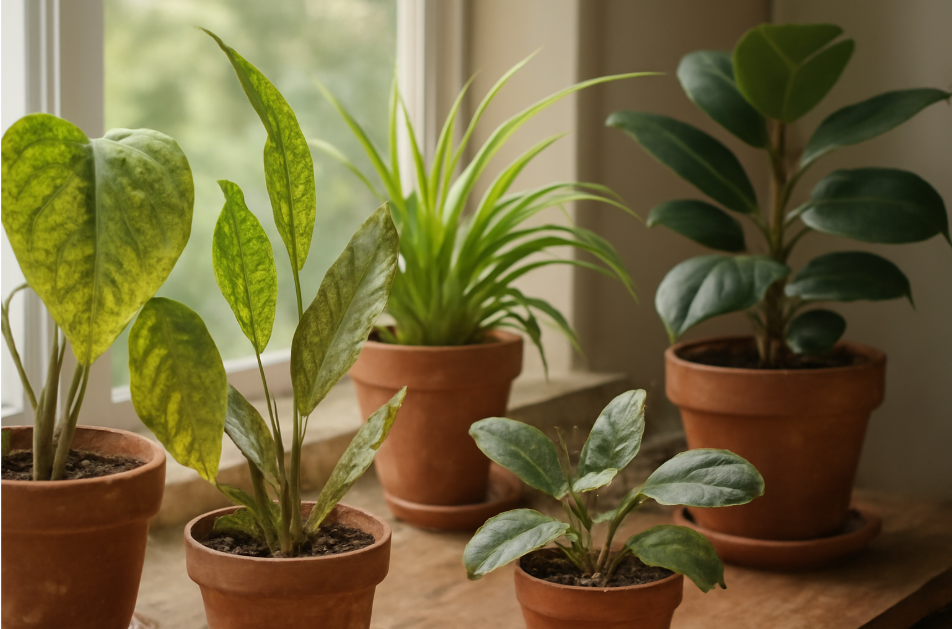
Top 10 Best Pest Control Products for Houseplants: Effective Solutions to Protect Your Greenery
Are pesky pests causing chaos in your indoor garden? 
If you’re new to plant care or struggling with an infestation, you’re not alone! The battle against houseplant pests is real, but with the right products, you can protect your plants and restore their health. From natural remedies to advanced pest control solutions, we’ve got you covered. Say goodbye to damaged leaves and hello to thriving plants!
Keep reading to discover the top 10 pest control products that will help you reclaim your plants and nurture a healthier indoor garden.
Table of Contents
ToggleCommon Pests in Houseplants
Houseplant pests can be tricky to spot, but knowing which ones to look out for is the first step in protecting your plants. Whether you’re a seasoned plant parent or a beginner, understanding the most common pests will help you identify and take action before damage is done. Here are the top culprits you should be aware of:
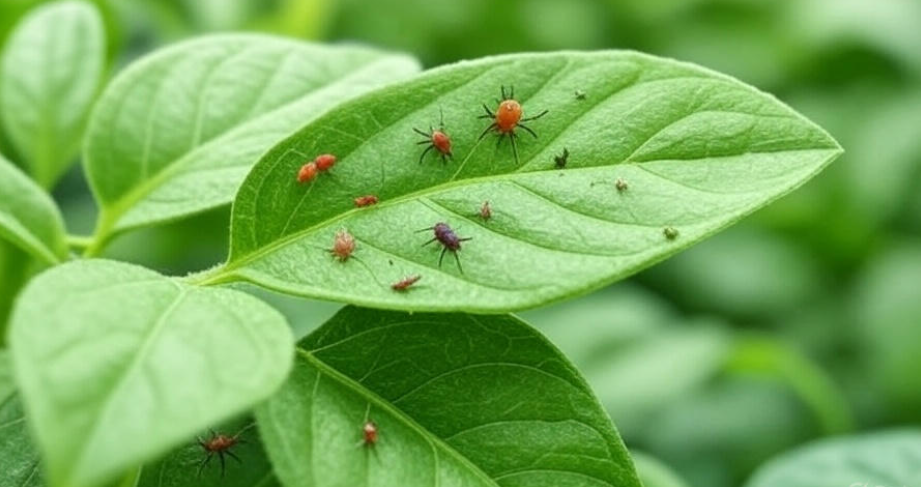
1. Spider Mites 
Spider mites are tiny, barely visible pests that thrive in dry conditions. They suck sap from leaves, causing them to become yellow, speckled, or even crispy. If you notice fine webbing on your plants, you’re likely dealing with spider mites.
How to spot them: Look for small, yellowish dots on the leaves and webbing in the corners of stems or leaves.
2. Aphids 
Aphids are soft-bodied insects that can quickly multiply. These little pests suck sap from plant tissues and can transmit plant diseases. You’ll often find aphids clustered on new growth, stems, or the undersides of leaves.
How to spot them: Look for clusters of small green, black, or white bugs, often accompanied by sticky honeydew residue on the plant.
3. Mealybugs 
Mealybugs are white, fuzzy insects that can cause significant damage if left unchecked. They tend to hide in the crevices of plants, particularly where stems meet leaves. Mealybugs feed on plant sap, leaving behind a waxy, cotton-like substance.
How to spot them: Look for the white, cottony substance around the base of stems or where leaves meet the stem.
4. Scale Insects 
Scale insects are hard to miss due to their armor-like shells. These pests suck the juices from your plant’s stems and leaves, weakening the plant and causing yellowing or wilting.
How to spot them: Scale insects appear as small, round, or oval bumps (often brown or yellow) stuck to plant stems or leaves.
5. Fungus Gnats 
Fungus gnats are tiny flying insects that live in the soil. While adults fly around plants, it’s their larvae that can cause problems, feeding on the plant’s roots. Overwatered soil is a perfect environment for these pests.
How to spot them: You’ll see small black flies hovering around the soil or the base of the plant.
Signs of a Pest Infestation
Spotting the signs of a pest infestation early is key to saving your houseplants from major damage. Pests often leave subtle clues that can help you identify a problem before it gets out of hand. Here’s how to tell if your plants are dealing with unwanted visitors:
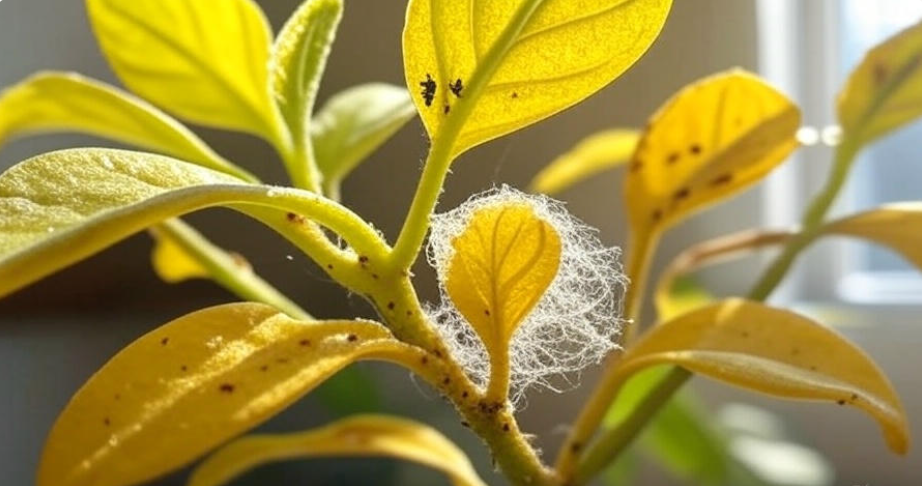
1. Physical Damage to Leaves 
One of the first signs of pests is visible damage to your plant’s leaves. If you notice:
- Yellowing or browning edges
- Holes or uneven patches of missing tissue
- Curling or deformed leaves
These could all be indicators that pests are feeding on your plant. Common culprits like aphids and spider mites cause this type of damage by sucking out plant juices.
2. Sticky Residue (Honeydew) 
If you see a sticky, shiny film on the leaves, stems, or even nearby surfaces, it’s a sign that your plants are infested with pests like aphids or mealybugs. These pests secrete a sugary substance known as honeydew as they feed, which attracts mold and creates a messy environment for your plant.
3. Visible Pests 
Sometimes, pests are easy to spot. If you look closely, you might find:
- Tiny insects crawling on stems, leaves, or soil.
- Webbing between leaves and stems (a sign of spider mites).
- White, cottony masses around stems or under leaves (mealybugs).
If you see any of these pests, it’s a clear sign that action is needed.
4. Wilting or Stunted Growth 
Pests like aphids and scale insects can block the flow of nutrients to your plants, leading to wilting or stunted growth. If your plant isn’t thriving despite proper care (light, water, etc.), pests may be the cause. Pay attention to any lack of new growth or yellowing stems.
5. Black Mold or Sooty Mold 
A dark, powdery coating on your plant’s leaves could be sooty mold, which grows on the honeydew excreted by pests. This mold blocks sunlight and reduces your plant’s ability to photosynthesize, weakening it over time.
Factors to Consider When Choosing Pest Control Products
When choosing the best pest control products for houseplants, it’s important to consider a few key factors to ensure you’re picking the right solution for your plants, your home, and the environment. Not all pest control products are the same, so let’s break down what to keep in mind when making your choice.
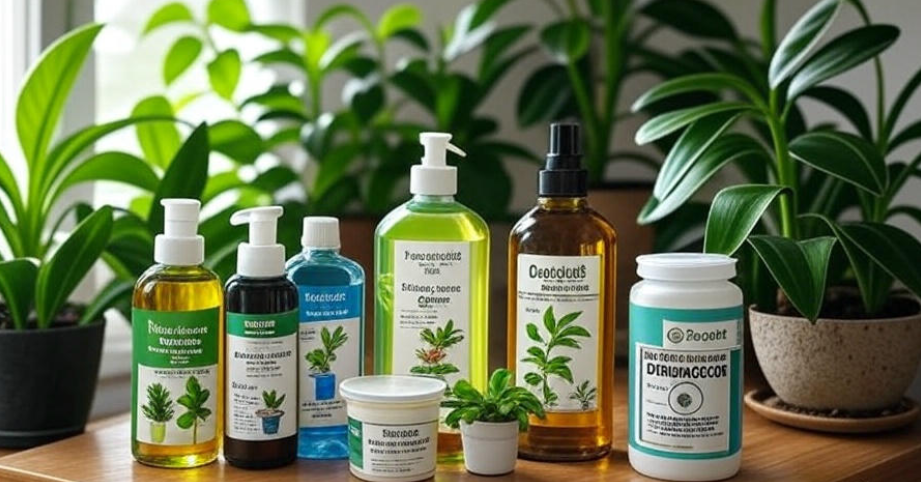
1. Effectiveness Against a Range of Pests 
Different pests require different treatments. Some products are designed to target specific pests, while others work on a wider range. For example, neem oil is great for spider mites, aphids, and mealybugs, while insecticidal soap can help with soft-bodied pests like aphids and whiteflies. When selecting a product, make sure it’s effective against the pests you’re dealing with.
2. Safety for Your Plants 
Not all pest control products are plant-friendly. Some harsh chemicals can harm your plants, especially delicate ones. Always check the label to ensure the product is safe for indoor plants and won’t cause leaf burn or other damage. Opt for non-toxic, gentle options like neem oil or insecticidal soap, which are generally safe for most houseplants.
3. Pet and Child Safety 

If you have pets or small children at home, safety is a top priority. Some chemical pesticides can be toxic to animals and humans. Look for products labeled as non-toxic or “safe for pets and children.” Organic and natural solutions like neem oil and diatomaceous earth are often the safest bet for homes with furry friends.
4. Eco-Friendliness 
If you’re environmentally conscious, you’ll want to opt for eco-friendly pest control products. Natural solutions, such as insecticidal soap, garlic spray, or beneficial insects like ladybugs, are biodegradable and don’t contribute to harmful chemicals in the environment. Eco-friendly products are a great way to protect your plants without harming the planet.
5. Ease of Application 
Pest control should be as hassle-free as possible. Choose a product that’s easy to apply, whether it’s a spray, soil drench, or sticky trap. For beginners, ready-to-use sprays are often the simplest choice, while more experienced gardeners might prefer concentrated solutions they can dilute themselves.
6. Residual Effectiveness 
Some pest control products provide long-lasting protection, while others need to be reapplied frequently. If you want to avoid constant treatment, look for products with residual effectiveness that will continue working for a few weeks. Products like horticultural oil or neem oil have lasting effects and will help keep pests at bay longer.
Top 10 Best Pest Control Products for Houseplants
If you’re looking to protect your houseplants from pests, you’re in the right place. Below, we’ve compiled a list of the top 10 best pest control products for houseplants, each carefully selected to help you tackle common pest problems efficiently and safely. Whether you prefer natural remedies or a more traditional approach, we’ve got you covered!

1. Neem Oil 
Neem oil is a top choice for organic pest control. It’s effective against a wide range of pests, including aphids, spider mites, and mealybugs. Plus, it’s safe for most houseplants and has antifungal properties that prevent plant diseases.
- Pros: Organic, safe for plants and pets, kills pests and prevents diseases
- How to Use: Dilute with water and spray on affected areas or use as a soil drench.
2. Insecticidal Soap 
Insecticidal soap is another gentle yet effective option. It works by breaking down the pest’s cell walls, causing them to dehydrate and die. It’s great for soft-bodied insects like aphids, mealybugs, and whiteflies.
- Pros: Non-toxic, safe for most plants, works on a variety of pests
- How to Use: Spray directly on pests, making sure to cover both sides of leaves.
3. Diatomaceous Earth 
Diatomaceous earth (DE) is a natural powder made from crushed algae fossils. It works by dehydrating insects like ants, aphids, and fleas. It’s a non-toxic and eco-friendly option for indoor plant pests.
- Pros: Safe for pets and plants, eco-friendly, long-lasting
- How to Use: Sprinkle lightly on the soil surface or around plant stems to control soil-dwelling pests.
4. Horticultural Oil 
Horticultural oil is a highly effective solution for suffocating pests like spider mites, scale insects, and aphids. It’s a great option for controlling pests without damaging your plants.
- Pros: Effective against a wide range of pests, prevents fungal infections
- How to Use: Spray directly onto plants, focusing on stems and the underside of leaves.
5. Pyrethrin-Based Sprays 
Pyrethrin, derived from chrysanthemum flowers, is a powerful, natural insecticide that kills a wide variety of pests. It works quickly and is safe for use on most houseplants if applied properly.
- Pros: Fast-acting, effective on many pests, organic
- How to Use: Spray on affected areas, reapply after a week if necessary.
6. Sticky Traps 
Sticky traps are a great way to capture flying pests like fungus gnats. These yellow traps attract insects, which get stuck to the surface. They’re easy to use and non-toxic, making them perfect for beginner gardeners.
- Pros: Non-toxic, easy to use, great for fungus gnat control
- How to Use: Hang traps near the affected plants or place them on the soil surface.
7. Beneficial Insects 
Introducing natural predators to your indoor garden is an excellent way to fight pests naturally. Ladybugs, predatory mites, and other beneficial insects can help keep pest populations under control.
- Pros: Natural, long-term solution, reduces the need for chemicals
- How to Use: Release beneficial insects near affected plants and let them do the work!
8. Garlic and Chili Pepper Spray 
A homemade solution made from garlic, chili peppers, and water can act as a natural repellent for many pests. It’s safe, easy to make, and effective at keeping pests like aphids and spider mites away.
- Pros: Homemade, natural, eco-friendly
- How to Use: Blend garlic and chili peppers with water, strain, and spray on affected plants.
9. Eco-friendly Aerosols 
Eco-friendly aerosols are designed to target pests without harsh chemicals. These sprays are a safe and effective solution for getting rid of pests on contact while being gentle on your plants.
- Pros: Fast-acting, safe for indoor use, effective on various pests
- How to Use: Spray directly on pests or around the plant’s environment.
10. Citronella Oil 
Citronella is known for its ability to repel flying insects like mosquitoes and gnats. It’s a great choice for preventing pests in humid indoor environments and keeping your plants pest-free.
- Pros: Effective against flying insects, safe for plants
- How to Use: Dilute with water and spray on affected areas or use as a soil drench.
How to Apply Pest Control Products Effectively
Applying pest control products properly is essential to get the best results and protect your plants. Whether you’re using natural solutions like neem oil or chemical sprays, follow these tips to make sure you’re using the right amount, in the right way, for maximum effectiveness.

1. Read the Instructions Carefully 
Before you start, always read the label on your pest control product. Instructions will tell you how to dilute, apply, and how often to reapply. Not following the directions could harm your plants or waste your product.
2. Test on a Small Area First 
Even if a product is labeled as safe for most houseplants, it’s always a good idea to test it on a small part of the plant first. Apply the product to a small, hidden section of the leaf or stem and wait 24-48 hours to check for any negative reactions like browning or wilting.
3. Apply During the Right Time of Day 
For the best results, apply pest control products either early in the morning or later in the evening. This avoids the harsh midday sun, which can cause plants to burn when they are sprayed. Early morning or late evening allows the product to settle on the leaves without evaporation.
4. Ensure Even Coverage 
When applying any liquid spray or oil, make sure to cover all parts of the plant, including the undersides of the leaves, where pests like to hide. Use a steady hand or a fine mist spray to evenly coat the plant, making sure no area is missed.
5. Use Protective Gear 
For your safety, especially when working with chemical treatments, always wear protective gear like gloves and a mask. This will protect your skin and lungs from exposure to potentially harmful ingredients, especially in aerosols or concentrated solutions.
6. Reapply as Needed 
Some pest control treatments are short-term and require reapplication. For example, insecticidal soap may need to be reapplied every 7-14 days, while oils like neem may have longer-lasting effects. Keep track of when you apply, and reapply according to the product’s guidelines.
7. Clean the Area After Treatment 
Once the treatment has dried, it’s a good idea to clean any surfaces where excess product may have settled. This is particularly important if you’re using chemical treatments. You can also wipe down the leaves with a damp cloth to remove any residue.
8. Monitor for Continued Pest Activity 
After applying pest control products, keep an eye on your plants for any signs of pests returning. If the infestation persists, you might need to try a different product or repeat the treatment more frequently.
Preventing Future Pest Problems
Once you’ve tackled a pest infestation, it’s important to take steps to prevent future issues. A little bit of care and attention can go a long way in keeping your houseplants healthy and pest-free. Here’s how to prevent pests from returning and keep your greenery thriving:
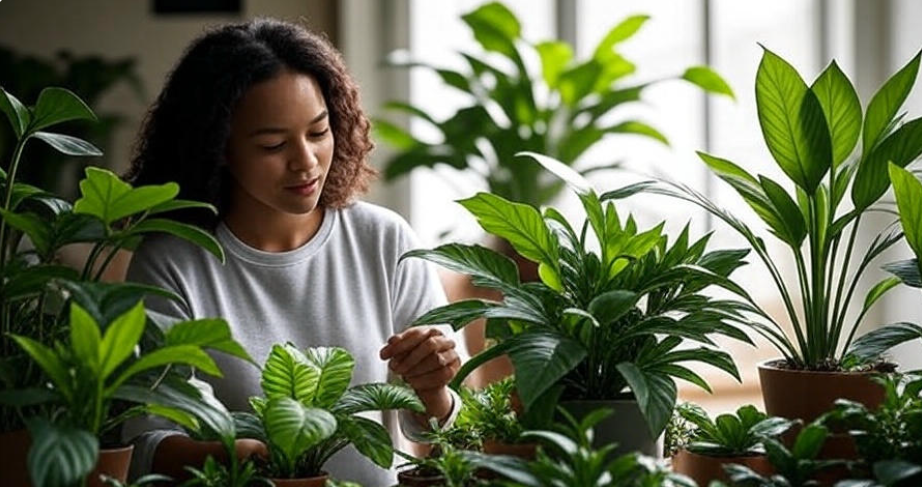
1. Regularly Inspect Your Plants 
Make it a habit to check your plants weekly for signs of pests. Look under leaves, on stems, and in the soil for any early signs of trouble. The sooner you spot a pest, the easier it will be to address before it becomes an infestation.
2. Maintain Plant Health 
Healthy plants are less likely to attract pests. Ensure your plants get the right amount of light, water, and nutrients. Regularly remove dead or yellowing leaves to prevent pests from using them as a food source. Strong, healthy plants are more resilient to pest damage and disease.
3. Quarantine New Plants 
When you bring new plants home, isolate them from your other plants for at least two weeks. This prevents any potential pests or diseases from spreading. During this quarantine period, check the new plant carefully for any signs of pests before introducing it to your collection.
4. Avoid Overwatering 
Overwatering creates the perfect environment for pests like fungus gnats, which thrive in moist soil. Make sure your plants have proper drainage, and only water when the top inch of soil feels dry. Allowing the soil to dry out between waterings can help prevent pests from taking hold.
5. Use Natural Repellents 
Natural pest repellents, like cinnamon, cloves, or even citrus peels, can help deter pests from settling in your plants. You can sprinkle cinnamon on the soil surface to deter fungus gnats, or place citrus peels near the base of plants to keep pests away.
6. Clean Your Plants and Environment 
Dust and dirt can harbor pests and create hiding places for them. Regularly wipe down your plants’ leaves with a damp cloth to keep them clean and pest-free. Also, keep the surrounding area tidy by removing fallen leaves or plant debris where pests can hide.
7. Rotate Plants and Use Air Circulation 
Good air circulation is essential to keeping pests away. A well-ventilated space can prevent humidity build-up, which attracts certain pests. If possible, rotate your plants regularly to ensure they all get an even amount of light and air.
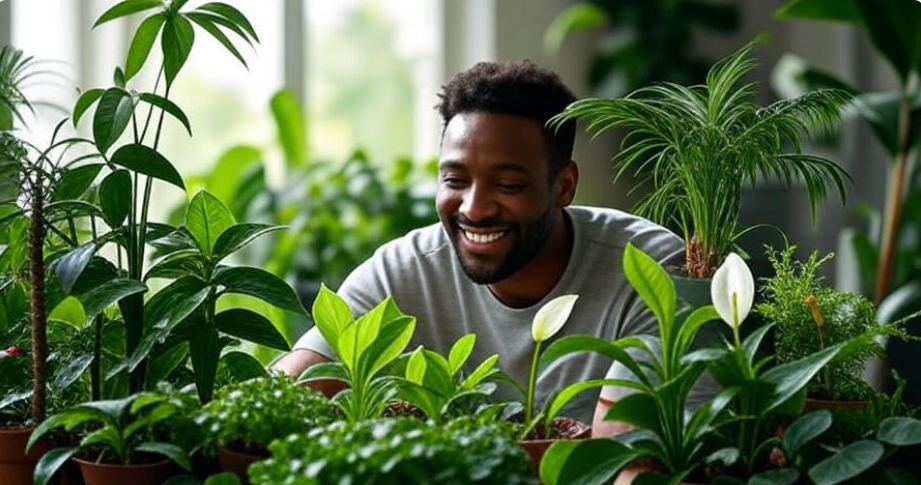
Caring for houseplants involves more than just watering and providing sunlight—it also means keeping them safe from pests. By using the best pest control products for houseplants, you can ensure your greenery stays healthy, vibrant, and pest-free. Whether you choose natural solutions like neem oil or opt for effective aerosols, the right pest control product will make a world of difference in protecting your plants.
Remember, prevention is just as important as treatment. Regular plant inspections, maintaining plant health, and using eco-friendly repellents can help stop pests before they become a problem. With the tips and products in this guide, you’re well-equipped to protect your plants and enjoy a thriving indoor garden.
Take action today, and say goodbye to plant pests for good! Your plants will thank you with healthier leaves, more vibrant blooms, and improved overall growth.
FAQs on Top 10 Best Pest Control Products for Houseplants
1. What are the best pest control products for houseplants?
The best pest control products for houseplants include natural solutions like neem oil, insecticidal soap, and diatomaceous earth, as well as products like horticultural oil and pyrethrin-based sprays. These products are effective against common pests such as aphids, spider mites, and mealybugs, while being safe for most plants and indoor environments.
2. Are natural pest control products safe for houseplants?
Yes, natural pest control products like neem oil and insecticidal soap are generally safe for houseplants. They are made from organic ingredients and are gentle enough to use on most plants without causing harm. However, always test on a small part of the plant first to ensure it won’t cause any adverse reactions.
3. How often should I apply pest control products to my houseplants?
The frequency of application depends on the product and the severity of the infestation. For most pest control solutions like insecticidal soap or neem oil, it’s recommended to apply every 7-14 days until the problem is under control. Always follow the instructions on the product label for the best results.
4. Can I use pest control products for outdoor plants on my indoor houseplants?
It’s important to use pest control products specifically labeled for indoor use when treating houseplants. Some outdoor products may contain chemicals that are too harsh for indoor environments or plants. Always check the label to ensure the product is safe for use indoors.
5. What are the signs that I need pest control for my houseplants?
Common signs of a pest infestation in houseplants include yellowing or wilting leaves, visible insects on the leaves or stems, sticky residue (honeydew), and the presence of webbing. If your plant is not thriving or showing unusual signs, pests could be the cause.
6. How can I prevent pest problems in my houseplants?
Preventing pest problems involves regular plant inspections, maintaining plant health through proper watering and sunlight, and isolating new plants before adding them to your collection. You can also use natural deterrents like cinnamon or garlic sprays to keep pests away.
7. Are pest control products safe for pets and children?
Many pest control products, especially organic options like neem oil and insecticidal soap, are safe for pets and children when applied correctly. However, always check the label for any safety warnings and allow treated plants to dry before allowing pets or children to come into contact with them.
8. How do I apply pest control products to my houseplants?
When applying pest control products, it’s important to follow the manufacturer’s instructions. Spray directly onto affected areas, including the undersides of leaves where pests often hide. Apply in the early morning or evening to avoid direct sunlight, and wear gloves if using chemicals. Reapply as needed based on the product’s guidelines.
